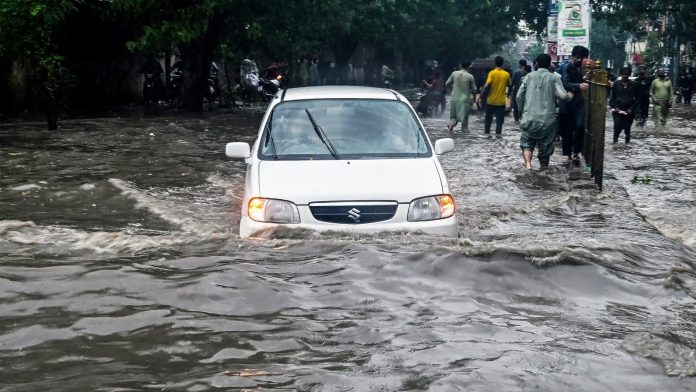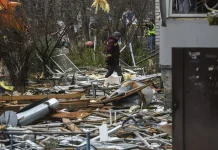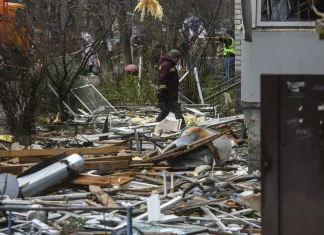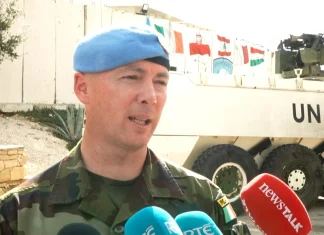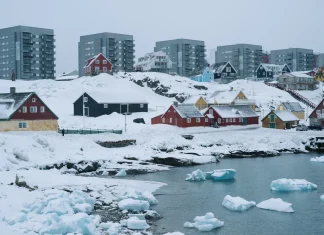The Relentless Monsoon: Pakistan’s Northern Provinces Battle Devastating Floods and Landslides
As the monsoon clouds hang heavy and relentless over Pakistan’s rugged northern provinces, the landscape below tells a harrowing story of survival, loss, and resilience. For five consecutive days now, torrential rains have battered the mountainous terrain of Khyber Pakhtunkhwa, turning peaceful villages into rubble and waterways into rushing torrents that have swallowed homes and hopes alike.
On the ground, the death toll has climbed to nearly 400—a grim testament to the destructive power of nature and the vulnerabilities of a region caught between centuries of natural cycles and the escalating forces of climate change. Rescuers, aided by army troops and local volunteers, continue to sift through the cold mud and shattered stone in the desperate hope of uncovering survivors or at least the bodies of those who vanished in the floods and landslides.
Voices from the Rubble: Stories of Loss and Survival
In the village of Dalori, one of the hardest-hit areas, the atmosphere is heavy with grief and disbelief. Here, amid the piles of earth and debris, neighbors and families have gathered in silent, anxious clusters. Watching the rescue teams work, many clutch photographs of loved ones or pray softly, seeking a small measure of hope amidst the destruction.
For Umar Islam, a 31-year-old laborer, the flood’s cruel blow came too suddenly. “Our misery is beyond explanation,” he says, his voice thick with sorrow. “In a matter of minutes, we lost everything we had. Our lives are ruined.” His grief is raw, a reflection of what hundreds of families in the region are now enduring.
Across the same village, Fazal Akbar, 37, recalls the chaos that erupted when the skies opened. “It was terrifying,” he explains, his eyes scanning the devastated landscape as if searching for something lost. “No one had even a minute to react. The mosque’s calls to alert the village came too late to save many, but the people did what they could to rescue their neighbors. In less than twenty minutes, the village was reduced to ruins.”
Challenges in the Rescue: Battling Nature and Infrastructure
Efforts to reach the worst-affected areas have been hampered by damaged roads and severed communication lines. Many villages remain isolated, making coordinated rescue and relief operations difficult, if not impossible. Mobile phones are failing, and even the most basic logistical support has slowed under the weight of the ongoing storm.
But the menace is not confined to the north. To the south, Pakistan’s largest city, Karachi, is bracing itself for urban flooding. This sprawling metropolis, home to over 20 million people, struggles with outdated infrastructure that strains under sudden loads of water. “The weak drainage system means urban floods are a real threat,” warns Amir Hyder Laghari, chief meteorologist for Sindh province.
During the latest downpour, Karachi’s streets turned into streams. Commuters waded through knee-deep water as power outages plunged many neighborhoods into darkness—an ominous sign of the city’s vulnerability. Meanwhile, districts in Balochistan are also grappling with flooding, forcing road closures and damage to dozens of homes.
Climate Change and Pakistan’s Increased Vulnerability
While monsoon rains are a natural seasonal occurrence, their growing intensity and unpredictability bear the unmistakable fingerprints of climate change. Pakistan ranks among the world’s most vulnerable nations to climate-induced disasters, with its geography amplifying the consequences of warming temperatures and shifting weather patterns.
The scale of this year’s flooding is staggering but not unprecedented. Less than two years ago, in 2022, monsoon flooding submerged nearly one-third of the country, claiming approximately 1,700 lives and displacing millions. Experts warn that severe weather events like these will only increase in frequency and intensity.
Lieutenant General Inam Haider Malik, NDMA chairman, cautions that the worst may yet be to come. “More rain is expected until Saturday, and yet another spell is forecast by the end of this month,” he said. “Our preparedness and resilience will be tested again and again.”
The Human Cost and Larger Questions
Beyond the numbers—almost 400 dead in the last five days, more than 700 lives lost since late June, nearly a thousand injured and counting—lies the story of communities trying to rebuild amid persistent uncertainty.
Imagine for a moment the devastating reality faced by families like Umar’s and Fazal’s: sudden, unrelenting floods tearing through their homes, washing away livelihoods built over generations, leaving nothing but grief behind. What will it take to help them rise again? And how can policymakers and international communities work together to better protect those living on the frontlines of climate change?
Pakistan’s situation also serves as a sobering reminder of global climate justice. The countries facing the worst impacts are often those least responsible for global emissions—yet they bear the brunt of the consequences.
Will this growing crisis finally galvanize meaningful action on climate resilience and infrastructure investment? Can global solidarity shift from words to tangible support? As the waters rise and recede, these urgent questions demand answers.
Steps Forward Amidst the Storm
In the immediate term, emergency aid, robust rescue operations, and coordination between government bodies and local communities are critical. The courage and spirit of the local volunteers working hand-in-hand with army personnel offer a glimmer of hope amid despair. Yet long-term solutions must center on enhancing infrastructure to withstand flooding, improving early warning systems, and addressing broader environmental challenges.
Regions like Khyber Pakhtunkhwa have rich cultural tapestries and histories interwoven with their natural surroundings. Their survival depends not only on emergency relief but on sustainable development that respects these connections and prepares for the future.
To those reading from afar: How might this story reshape your understanding of climate impact? What role can global citizens play in supporting vulnerable communities facing catastrophic weather events? And, most fundamentally, how can empathy and awareness translate into action?
Pakistan’s monsoon floods are a tragedy unfolding in real-time—a powerful lesson in the fragility of human existence, the raw power of nature, and the urgent global need to act in concert to protect our shared planet.


